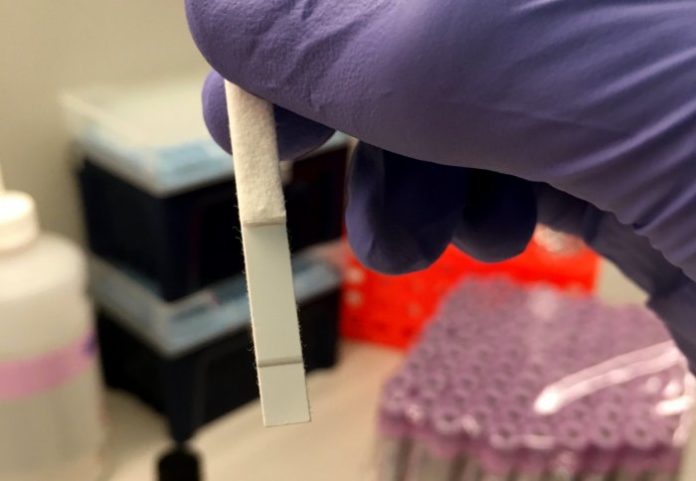Imperial researchers in collaboration with University College London as part of the i-sense program have invented a new diagnostic tool which is reasonable, efficient to withstand harsh conditions and highly sensitive.
The research, led by Imperial Professor Molly Stevens’ team of researchers and published in ACS Nano, refined a current diagnostic method known in the field as a lateral flow immunoassay, an analogous method performed by pregnancy tests.
In the case of HIV, if a patient is positive, virus components present in the blood will bind to coloured particles on the paper test, indicating HIV infection.
Since a year dot, communicable diseases like Ebola and Zika have ravaged at wide-scale, whereas HIV is sustaining as a pervasive health predicament for many. The subject of concern is prominent in developing countries where communicable diseases oft undetected post resulting widespread pestilence.
To transact such flare-up diseases effectively, extensive efforts are being made to produce tests that permit premature diagnosis. At present, inexpensive point-of-care techniques are employed to diagnose communicable diseases have some constraint, particularly when it comes to diagnosing very low levels of markers in the blood.
Dr Mike Thomas of Department of Materials at Imperial said, “To the best of our knowledge, our newly developed test is the simplest and most sensitive colourimetric paper-based lateral flow diagnostic test for HIV to date.”
This novel technology utilizes an analogous technique to the lateral flow immunoassay, however, is immensely sensitive. A test can diagnose HIV at a very low level of the virus in the blood permitting premature diagnosis.
Test comprehends a protein called p24, discovered on the distal of the HIV virus, which performs as a biomarker of the disease. By consolidating an ‘amplification stage’ to the standard immunoassay, that performs to increase the signal produced by p24 up 100 folds. The team were efficient to diagnose the presence of the virus with sensitivity surpassing the current industry standard tests.
Dr Eleanor Gray, Research Associate of UCL said, “The test, which uses llama antibodies made by the i-sense McKendry group at UCL, includes an amplification step that triggers a colour change at the test line when small quantities of p24 are present, even during very early stages of HIV infection.”
Promote action point is to display results produced from the test on a mobile phone through an app, making it easier for community health workers to diagnose and treat HIV in developing countries.
Colleen Loynachan of the Department of Materials at Imperial, specified a reason, “Because our test components show extraordinary long-term stability and sensitivity, we believe our amplified lateral flow technology has a high potential for translation into field test settings.”
